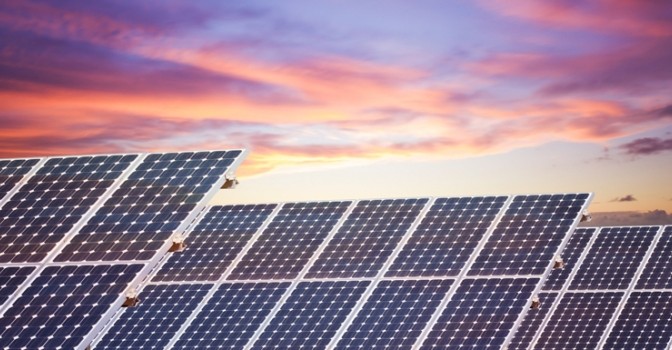Blessed with high solar radiation levels and well positioned at 23 degrees from the equator, the Sultanate is in a prime position to employ solar energy and for the first time in Oman, following on from the Authority for Electricity Regulation’s (AER) renewable energy recommendation issued in May 2008 and the signing of a power purchase agreement by RAECO, Astonfield and Multitech LLC, the Wilayat Al Mazyunah in the Dhofar Governorate will be home to the country’s pilot solar energy plant by June 2014.
This was announced at a special signing ceremony-cum-press conference that saw Nabil bin Abdullah al Ghassani, Chairman of the Rural Areas Electricity Company (RAECO) SAOG; Ameet Shah, CEO of Astonfield Renewables; and Shaikh Omar bin Suhail Bahwan, Director, Multitech LLC ink in the agreement on behalf of their respective companies here at the Inter-Continental Muscat yesterday.
Hamed bin Salim al Magdheri, CEO of RAECO, Qais al Zakwani, Deputy Executive Director, AER, and Ahmed bin Said al Harthy, Senior Manager and Head of Renewable Energy Team, RAECO, addressed the audience that included Mohammed bin Abdullah al Mahrouqi, Chairman of the Public Authority for Electricity and Water (PAEW), about the Al Mazyunah solar energy project.
It was noted, AER’s renewable energy study recommended the implantation of small scale pilot projects by RAECO to produce electricity using renewable energy resources, specifically solar and wind. RAECO selected some suitable sites and the site located in Al Mazyunah is near the existing power station owned by RAECO.
As mentioned, the project is the first one of its kind to produce electricity using solar energy technology in the Sultanate of Oman. It will help produce electricity in a hybrid system along with the existing diesel power station and feed the existing electrical network. It is expected that the project will be able to cover most of Al Mazyunah’s demand for electricity in the winter period, at least in the early years of the project’s timeframe, bearing in mind the possibility of project expansion.
The technology used for the project, sourced from one of the world’s leading providers of renewable energy in emerging markets Astonfield Renewables in coordination with Bahwan Engineering Group’s Multitech LLC, is ‘thin film and poly crystalline. It will have a capacity of 303 KW with expected annual production of 558 Mwh, the allocated plot area is 8000 square meters, and supply and distribution will be by RAECO.
The entered into Power Purchase Agreement is a ‘build, own, operate’ one for a duration of 20 years
Some of the objectives being sought from the project include:
• Assess scope for reducing fossil fuel use and related emissions that are caused by diesel fuel
• Test the performance of solar and wind technologies under local weather and environmental conditions.
• Reduce operational costs of electricity production by using renewable energy resources and compare it with operational costs of fossil fuel.
• Develop a database for the performance of renewable energy technologies to enable RAECO and other government related entities to take future decisions with regard to expanded use of these technologies, especially when planning for large projects within the main interconnected system.
• Allow RAECO staff to gain experience of operating and maintaining renewable energy technologies.
The operational costs of using solar energy to produce electricity is less than using fossil fuel (diesel), but the technology itself is still developing, so the capital cost could be higher than the technology of fossil fuels. In the long-term, however, the project is expected to be feasible as the economic evaluation of the project shows a positive net present value.
Further, heavy government subsidies of more than 3 times the international value of the fuel, allows for artificially lower electricity charges; use of renewable energy forms will allow the lost revenue from the subsidies to be recovered and utilised, as required, by the government.
Operational costs include operation and maintenance as well as administrative works that support the project.
As noted, the Sultanate is a country with high solar radiation level that can produce about 6.5 kwh per square meter. In his comments to the Observer, al Magdheri outlined this point by noting, “This rate is one of the best. We have the best location for radiation from the sun we are 23 degrees from the equator and this is a good angle as recognised by ISO as efficient with regard to heat deviation. This angle is good because it is neither too direct, which is not preferable, and it is not too distant.
“We should have been already in a position to use solar power, but due to cost of technology and the heavy subsidies it wasn’t feasible. Now, however, it is feasible due to the available savings from fossil fuel costs.”
Commenting on the project, he said, “It is very important because we have two significant factors, Firstly, it is using electricity at less cost and, secondly, being able to gather new data and learn more from this. Other considerations include the benefits to local Omani employees who can receive specialised training and gain employment emanating from this project. This can allow for a good base for similar future projects and more employment opportunities in a field that is new to Oman.”
With regard to Oman’s entry into renewable energy usage at this level, he pointed out, “Oman has its own method of entering into these kinds of ventures, where we start by gathering information, educating ourselves about the pros and cons before going ahead with a project.
“There are other places that have been selected for renewable energy projects including ‘wind energy’ in Masira and Thamrait and ‘solar energy’ in Mahout, Duqm, and other areas around Salalah. It is good that we will be able to get comparative data between these two sources of energy,” added al Magdheri.


